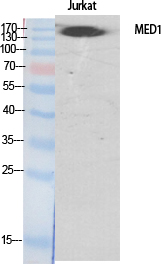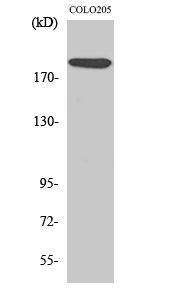TRAP220 (phospho Thr1457) Polyclonal Antibody
- Catalog No.:YP0890
- Applications:WB;IHC;IF;ELISA
- Reactivity:Human;Mouse;Monkey
- Target:
- TRAP220
- Fields:
- >>Endocrine resistance;>>Thyroid hormone signaling pathway
- Gene Name:
- MED1
- Protein Name:
- Mediator of RNA polymerase II transcription subunit 1
- Human Gene Id:
- 5469
- Human Swiss Prot No:
- Q15648
- Mouse Gene Id:
- 19014
- Mouse Swiss Prot No:
- Q925J9
- Immunogen:
- The antiserum was produced against synthesized peptide derived from human PPAR-BP around the phosphorylation site of Thr1457. AA range:1423-1472
- Specificity:
- Phospho-TRAP220 (T1457) Polyclonal Antibody detects endogenous levels of TRAP220 protein only when phosphorylated at T1457.
- Formulation:
- Liquid in PBS containing 50% glycerol, 0.5% BSA and 0.02% sodium azide.
- Source:
- Polyclonal, Rabbit,IgG
- Dilution:
- WB 1:500 - 1:2000. IHC 1:100 - 1:300. IF 1:200 - 1:1000. ELISA: 1:5000. Not yet tested in other applications.
- Purification:
- The antibody was affinity-purified from rabbit antiserum by affinity-chromatography using epitope-specific immunogen.
- Concentration:
- 1 mg/ml
- Storage Stability:
- -15°C to -25°C/1 year(Do not lower than -25°C)
- Other Name:
- MED1;ARC205;CRSP1;CRSP200;DRIP205;DRIP230;PBP;PPARBP;PPARGBP;RB18A;TRAP220;TRIP2;Mediator of RNA polymerase II transcription subunit 1;Activator-recruited cofactor 205 kDa component;ARC205;Mediator complex subunit 1;Peroxiso
- Observed Band(KD):
- 168kD
- Background:
- The activation of gene transcription is a multistep process that is triggered by factors that recognize transcriptional enhancer sites in DNA. These factors work with co-activators to direct transcriptional initiation by the RNA polymerase II apparatus. The protein encoded by this gene is a subunit of the CRSP (cofactor required for SP1 activation) complex, which, along with TFIID, is required for efficient activation by SP1. This protein is also a component of other multisubunit complexes e.g. thyroid hormone receptor-(TR-) associated proteins which interact with TR and facilitate TR function on DNA templates in conjunction with initiation factors and cofactors. It also regulates p53-dependent apoptosis and it is essential for adipogenesis. This protein is known to have the ability to self-oligomerize. [provided by RefSeq, Jul 2008],
- Function:
- function:Component of the Mediator complex, a coactivator involved in the regulated transcription of nearly all RNA polymerase II-dependent genes. Mediator functions as a bridge to convey information from gene-specific regulatory proteins to the basal RNA polymerase II transcription machinery. Mediator is recruited to promoters by direct interactions with regulatory proteins and serves as a scaffold for the assembly of a functional preinitiation complex with RNA polymerase II and the general transcription factors.,PTM:Phosphorylated by MAPK1 or MAPK3 during G2/M phase which may enhance protein stability and promote entry into the nucleolus. Phosphorylated upon DNA damage, probably by ATM or ATR.,sequence caution:Contaminating sequence. Potential poly-A sequence.,similarity:Belongs to the Mediator complex subunit 1 family.,subcellular location:A subset of the protein may enter the nucleol
- Subcellular Location:
- Nucleus . A subset of the protein may enter the nucleolus subsequent to phosphorylation by MAPK1 or MAPK3.
- Expression:
- Ubiquitously expressed.
- June 19-2018
- WESTERN IMMUNOBLOTTING PROTOCOL
- June 19-2018
- IMMUNOHISTOCHEMISTRY-PARAFFIN PROTOCOL
- June 19-2018
- IMMUNOFLUORESCENCE PROTOCOL
- September 08-2020
- FLOW-CYTOMEYRT-PROTOCOL
- May 20-2022
- Cell-Based ELISA│解您多样本WB检测之困扰
- July 13-2018
- CELL-BASED-ELISA-PROTOCOL-FOR-ACETYL-PROTEIN
- July 13-2018
- CELL-BASED-ELISA-PROTOCOL-FOR-PHOSPHO-PROTEIN
- July 13-2018
- Antibody-FAQs
- Products Images
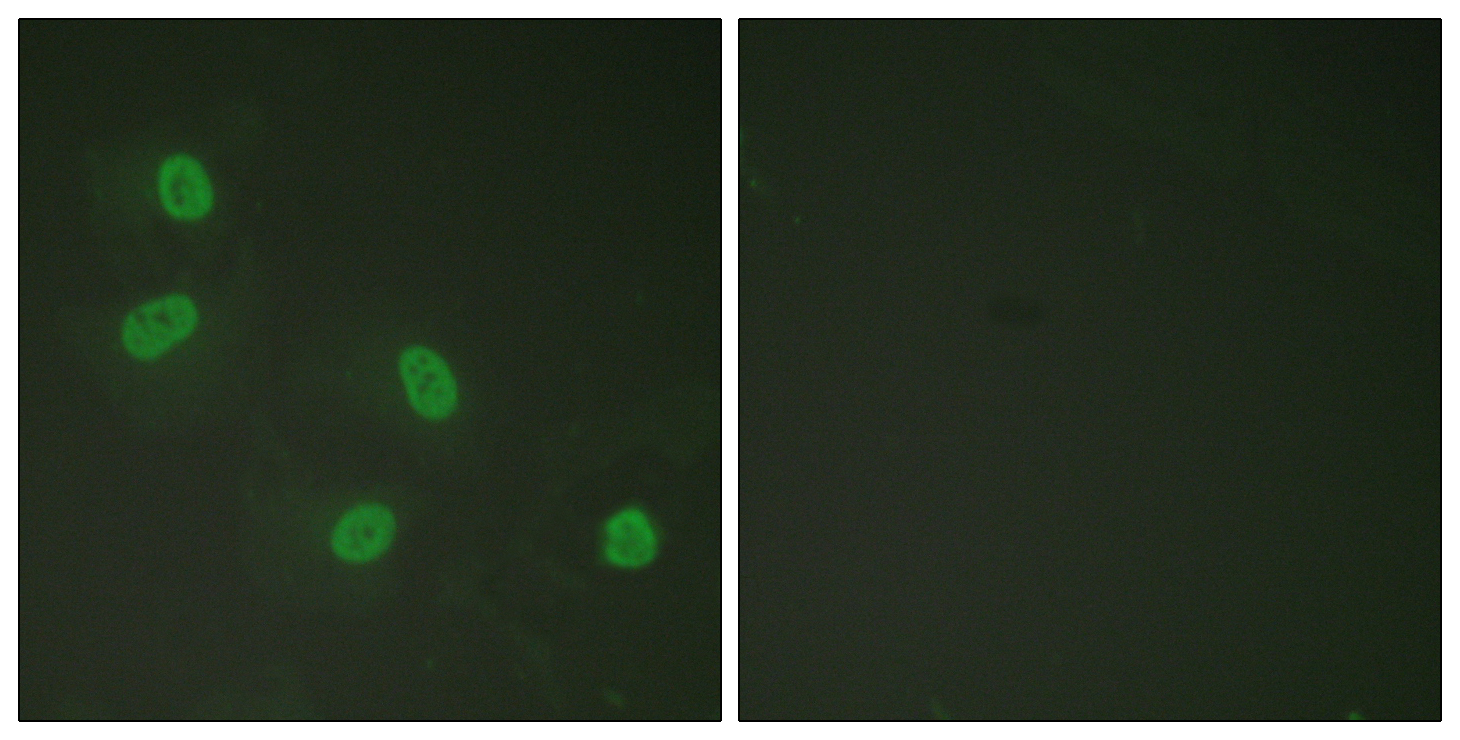
- Immunofluorescence analysis of HeLa cells, using PPAR-BP (Phospho-Thr1457) Antibody. The picture on the right is blocked with the phospho peptide.
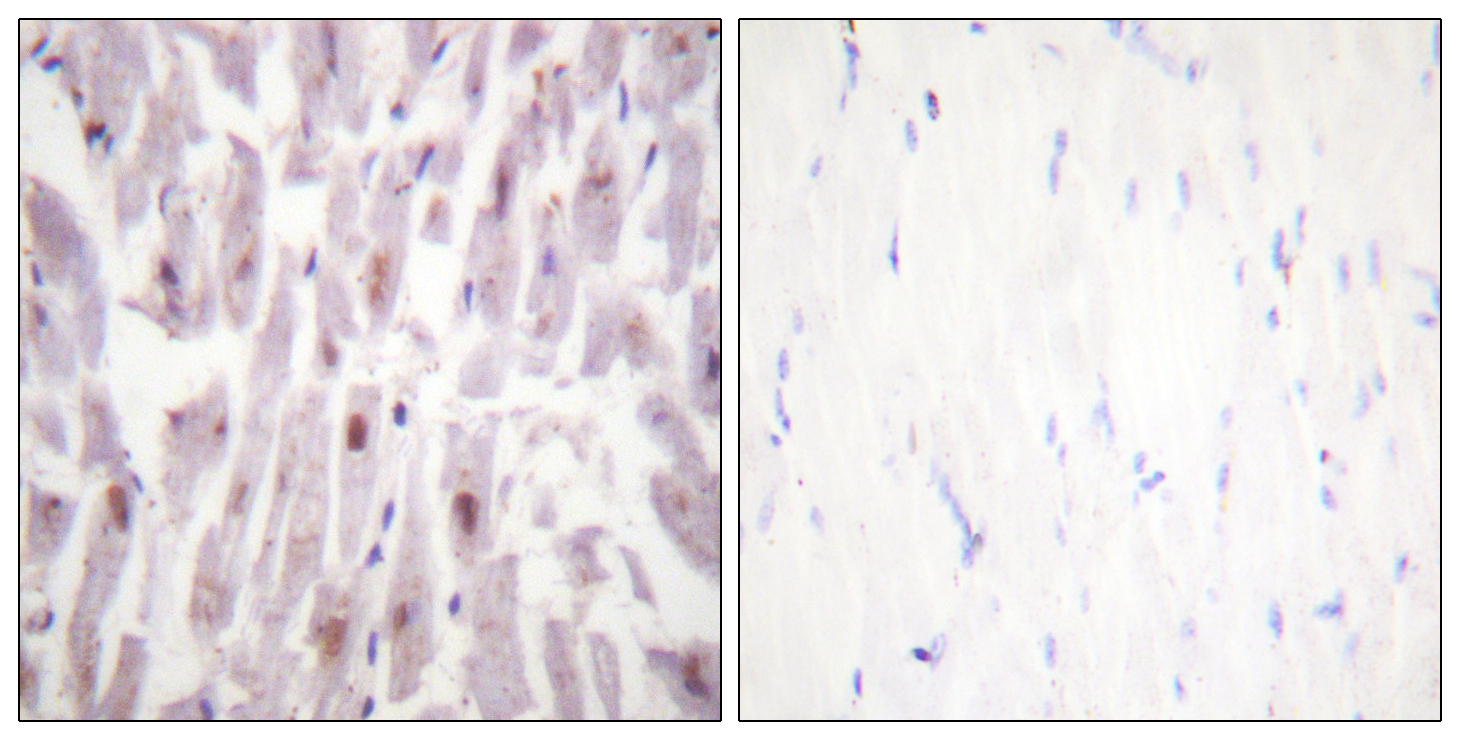
- Immunohistochemistry analysis of paraffin-embedded human heart, using PPAR-BP (Phospho-Thr1457) Antibody. The picture on the right is blocked with the phospho peptide.
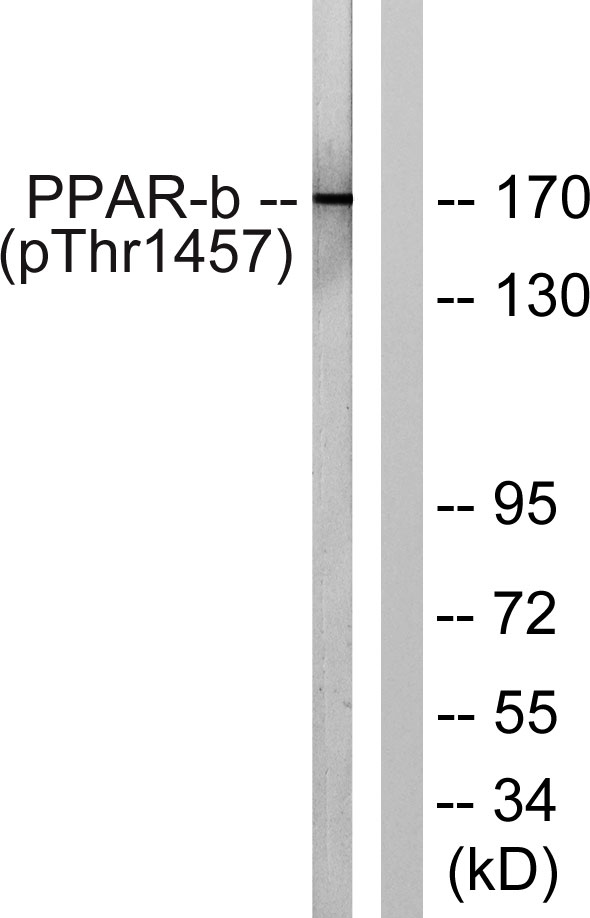
- Western blot analysis of lysates from HUVEC cells treated with Serum 20% 30', using PPAR-BP (Phospho-Thr1457) Antibody. The lane on the right is blocked with the phospho peptide.
